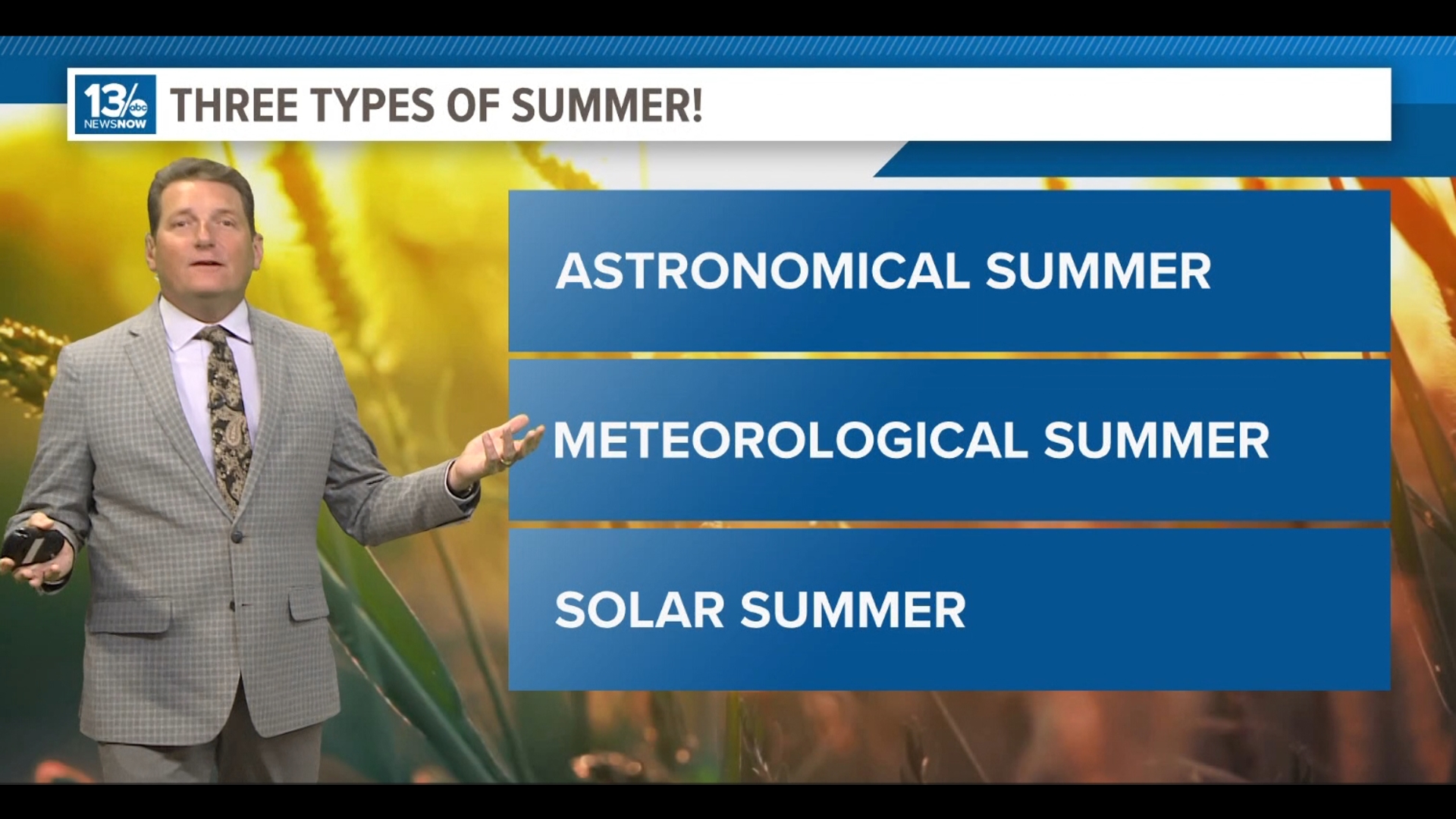NORFOLK, Va. — Ask 10 random people when summer begins and you might just 10 different answers!
When I did this exercise, there was a wide range of replies. And the funny thing is, I could make an argument for all of them! Depending on which "summer" you pick, you could have 3 different dates.
That's because there are three types of summer: Astronomical Summer, Meteorological Summer, and Solar Summer. Here's an explainer on when they each occur and why they exist.
What is Astronomical Summer?
The most typically referenced "summer" is Astronomical Summer.
It begins with the Summer Solstice, when the Sun's direct rays reach their northernmost point, the Tropic of Cancer. For the northern hemisphere, it is the longest day of the year. This year the Summer Solstice occurs on June 20 at 4:50pm. Norfolk will get 14 hours and 41 mi of sunlight.
After the 20th, our days will start getting short again. Astronomical Summer continues through the Fall Equinox. From year to year, the times of the solstices and equinoxes fluctuate, and so the length of the season. The length of Astronomical Summer can range from 89 to 93 days!
What is Meteorological Summer?
Meteorological Summer occurs during the months of June, July and August.
It starts every year on June 1, and ends August 31. These are the warmest months of the year. From a climatology standpoint, this makes deriving and keeping data and statistics on the weather for the season less complicated. It is easy to calculate seasonal statistics from the monthly statistics. Think about how challenging it would be to figure and keep data if you were to going to figure precise records with varying days and lengths of the season from year to year.
Not only is it easier calculate the information, it is also easier to share and explain the data to people and industries like agriculture and commerce that rely on it.
Although many people may not know that June, July, and August are technically referred to as "Meteorological Summer", most people in the northern hemisphere would tell you that June, July and August are the summer months, and September is a fall month.
What is Solar Summer?
Finally we have Solar Summer. This is the least commonly referred to "summer." Solar Summer occurs during the month when most of the sun's direct radiation falls in the northern hemisphere. The months include May, June, and July when the sun's angle is highest.
We are certainly heading into the warmer months. And that's not a shock. After all, Meteorological Summer starts Saturday!

